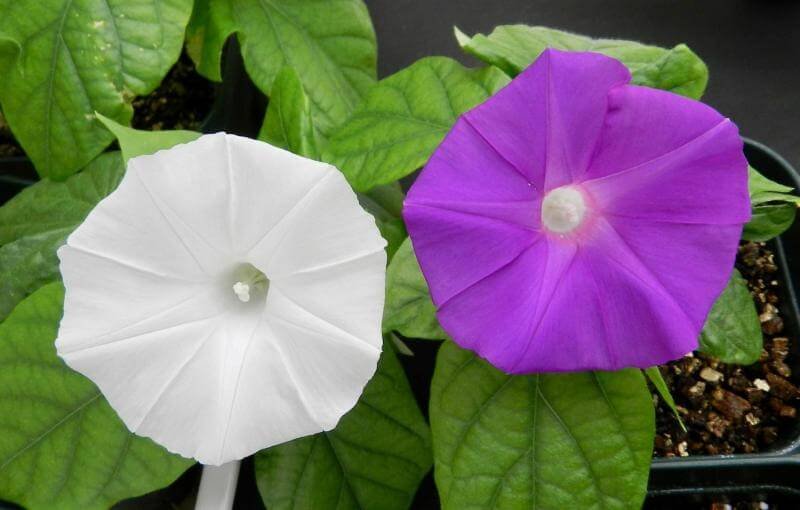In a world-first, Japanese scientists have used the revolutionary CRISPR, or CRISPR/Cas9, genome-editing tool to change flower color in an ornamental plant.
Researchers from the University of Tsukuba, the National Agriculture and Food Research Organization (NARO) and Yokohama City University, Japan, altered the flower color of the traditional Japanese garden plant, Japanese morning glory (Ipomoea nil or Pharbitis nil), from violet to white, by disrupting a single gene. This research highlights the huge potential of the CRISPR/Cas9 system to the study and manipulation of genes in horticultural plants.
…
The research team targeted a single gene, dihydroflavonol-4-reductase-B (DFR-B), encoding an anthocyanin biosynthesis enzyme, that is responsible for the color of the plant’s stems, leaves and flowers.
…
As reported in Scientific Reports, a short DNA sequence in the Japanese morning glory DFR-B gene was selected as the target for the CRISPR/Cas9 system. … As expected, the DFR-B enzyme was successfully inactivated, resulting in approximately 75 percent of the transgenic plants with green stems and white flowers.
The GLP aggregated and excerpted this article to reflect the diversity of news, opinion and analysis. Read full, original post: Scientists Use CRISPR Technology to Change Flower Color































